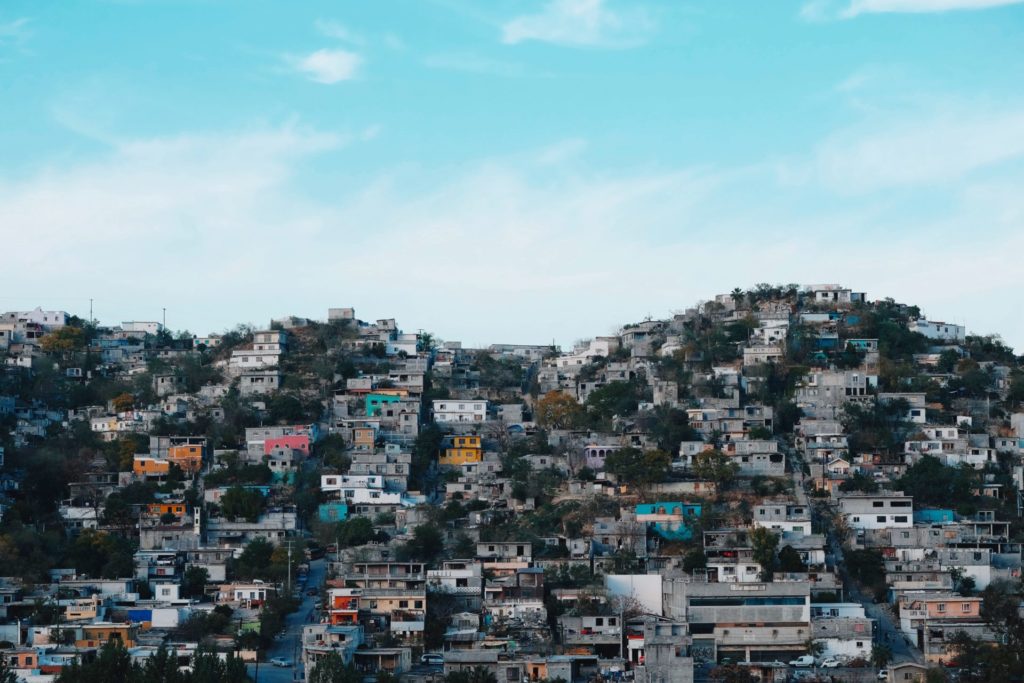Photo above: Daniel Lozano Valdes, Unsplash
Written and edited by Hannah Evans, MA, Population Connection, and Janet Larsen, Principal, One Planet Strategies LLC
Family Planning Enables People to Fight Climate Change
Access to family planning services is recognized internationally as a human right, as there are few rights more fundamental than the ability to choose whether, when, and with whom to have children. Ensuring access to comprehensive reproductive health care is also an essential component of sustainable development initiatives worldwide, as it yields myriad social, economic, and environmental benefits to society—so much so that increasing access to family planning is vital for achieving the UN Sustainable Development Goals for 2030, including for climate action [1].
Population growth and climate change are directly linked and should be considered within their broader socio-economic, environmental, and health contexts around the world. Increasing access to reproductive health and education augments climate resilience and adaptive capacity at the individual, community, and national levels. Over the longer-term, slowing population growth through rights-based investments in voluntary family planning can make substantial contributions to climate change mitigation efforts through macro-level emissions offsets at the global scale.
Population Growth and Climate Vulnerability
Population growth exacerbates the threats posed by climate change in a number of ways. Rapid population growth can lead to resource depletion, economic insecurity, and decreased overall health. Many countries experiencing rapid population growth have a high unmet need for family planning and also are increasingly—and most acutely—affected by climate change. The world’s low-income populations are especially vulnerable to future population and climate pressures—both of which are expected to rise significantly in coming decades (see Figures 1 and 2) [2, 3].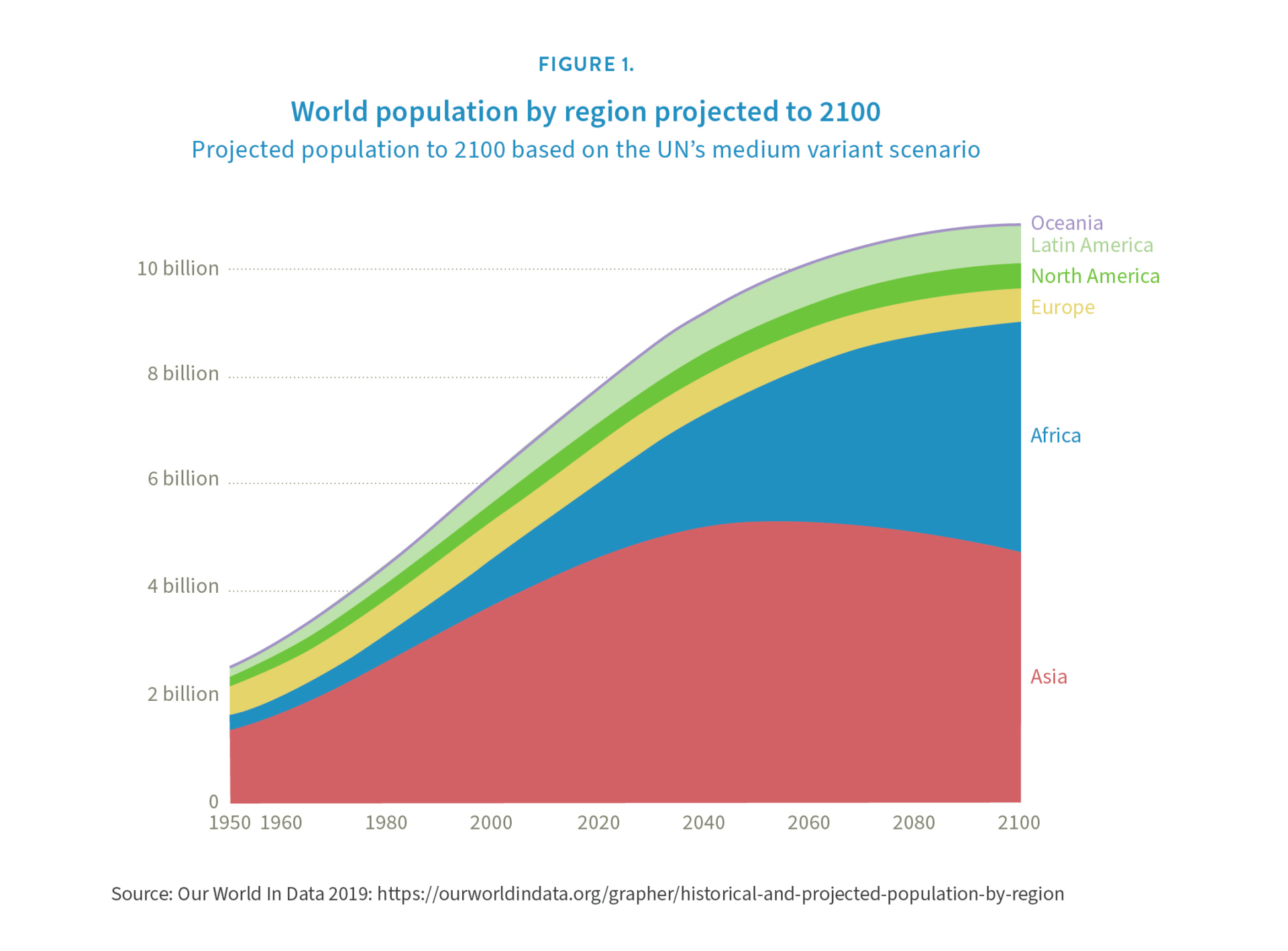
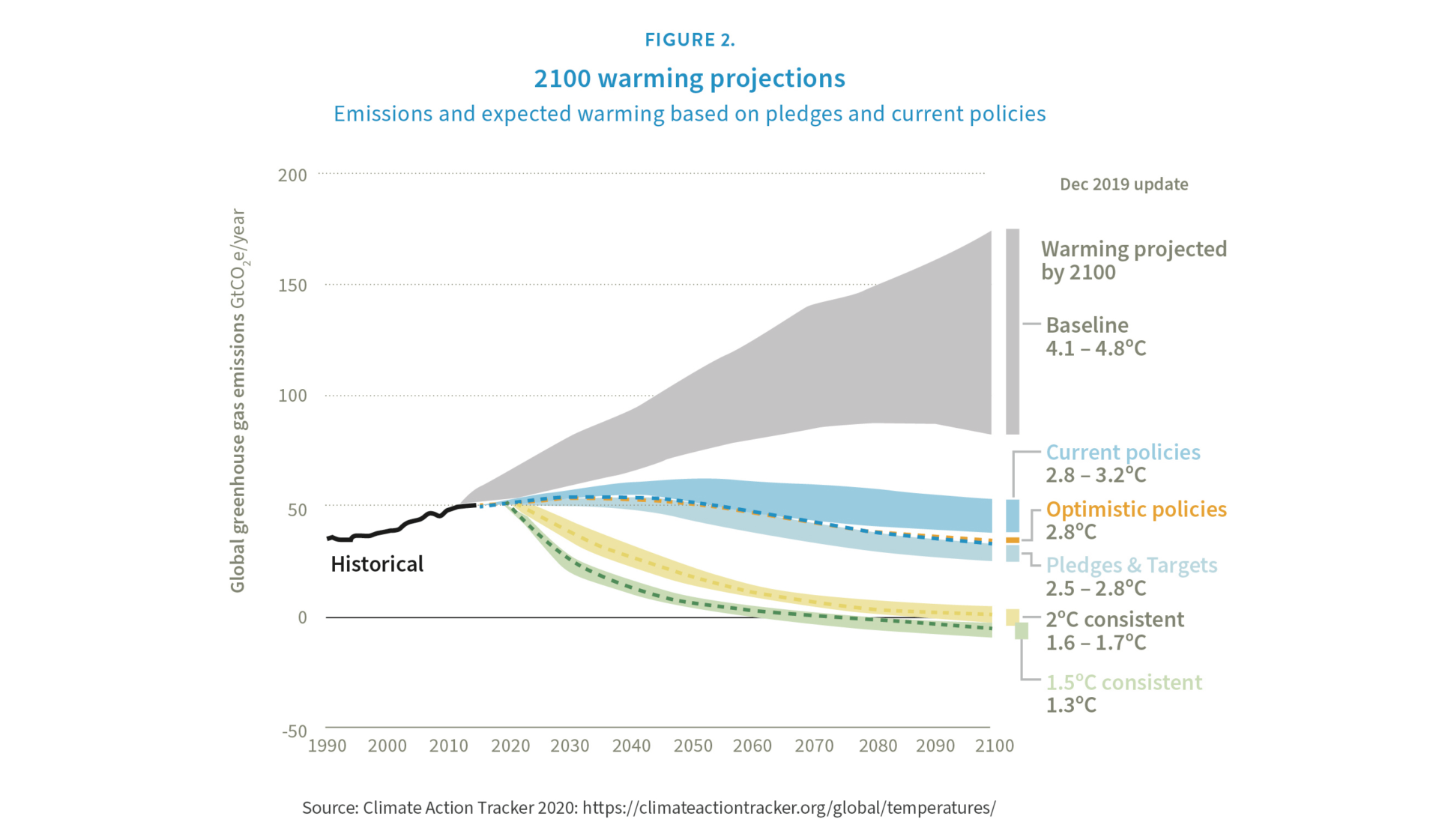
Climate change is the most threatening environmental crisis that humanity has ever faced. By burning fossil fuels and deforesting vast areas, humans have increased concentrations of greenhouse gases in the atmosphere to levels unprecedented in at least 800,000 years [4]. As a result, the earth’s average temperature is rising, endangering food security, fresh water supply, and human health [2].
Rapid population growth compounds the negative impacts of climate change. For example, both population growth and climate change contribute to natural resource depletion, such as soil erosion, deforestation, and reduction of fresh water supplies. Growing populations increase demand for these diminished natural resources, furthering environmental degradation and posing political challenges for equitable resource allocation.
People in low-income countries are among the most vulnerable to the impacts of climate change, despite their disproportionately small contribution to the problem. Due to geography (such as being tropical, high altitude, and/or land-locked), many of the world’s least developed countries are already prone to drought, flooding, and natural disasters. Climate change is increasing the frequency and intensity of such adverse weather events in many parts of the world [4]. Low-income populations have less capacity to prepare for and respond to changing weather patterns, rising sea levels, and weather extremes. Additionally, climate vulnerability disproportionately impacts low-income populations due to factors such as a heavy reliance on natural resources for the provision of food and to support livelihoods, and because alternative employment opportunities, and financial security more broadly, are often limited or reduced by structural restraints at the state-level. [5].
Climate change-induced disasters will lead people living in vulnerable situations to move. Climate refugees could cross national borders and move in-country in large-scale waves. The World Bank projects that by 2050, more than 143 million people in sub-Saharan Africa, South Asia, and Latin America could be forced to migrate within their countries as a result of crop failure, water scarcity, and sea level rise [17]. Much of the coming migration will shift populations from rural to urban areas, further crowding cities [3].
Migration to large cities, already a pervasive trend throughout the developing world, will likely increase climate vulnerability. The Intergovernmental Panel on Climate Change (IPCC) notes with very high confidence that “heat stress, extreme precipitation, inland and coastal flooding, landslides, air pollution, drought, and water scarcity pose risks in urban areas for people, assets, economies, and ecosystems” [18]. Within the context of sea level rise, 13% of the world’s urban population lives within 100 kilometers (60 miles) of a shoreline, and two-thirds of the world’s largest cities are coastal [19, 20]. Urban areas’ impermeable surfacesand high population densities combine to put large numbers of people at risk from coastal and inland flooding and storm surge.
Additionally, many of the world’s key food producing areas are vulnerable to rising seas and other changes associated with global warming. Over 500 million people live within the world’s agriculturally productive river deltas, which are at risk from sea level rise [21]. For example, a 1-meter (3-foot) rise in sea level could submerge a third of the densely populated and fertile Nile River Delta [22, 23]. It would put much of Bangladesh under water (see page 3) and would likely inundate large areas of the low-lying Meking delta, where 90% of Vietnam’s rice is grown.[21]. Agricultural yields also take a direct hit from the high temperatures and changing rainfall patterns associated with climate change. India and sub-Saharan Africa are two major regions expecting to add large numbers to populations while facing climate change-induced productivity losses of 40% or greater by 2080 [24].
Population Pressures Compound the Effects of Climate Change in Bangladesh
In Bangladesh, climate change jeopardizes economic growth, environmental sustainability, and social progress. Bangladesh is geographically about the size of New York State, but its population of around 165 million is more than eight times larger [6, 7]. Human numbers there have doubled over the past 39 years [7]. As the eighth most populous country in the world, Bangladesh is home to 2% of the global population, yet its annual carbon dioxide (CO2) emissions represent less than 0.2% of the global total [8].
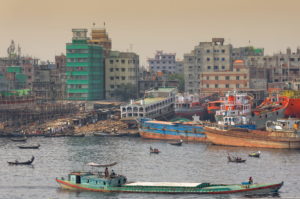
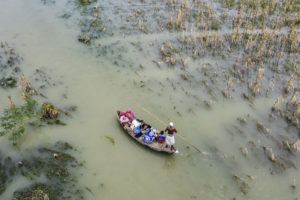
Despite its negligible contribution to climate change, Bangladesh is especially at risk for climate impacts because of its low elevation, high population density, and precarious infrastructure [8]. Two-thirds of Bangladesh’s land area is less than 5 meters above sea level [9]. Already the country is enduring the effects of rising seas, intense and irregular storms, cyclones, droughts, erosion, landslides, and flooding [9-11]. Soil salinization from sea level rise is causing agricultural yield losses [12]. Most Bangladeshis live along the flood-vulnerable coast and in the low-lying fertile river delta [9, 11]. The meter-plus sea level rise anticipated this century could inundate vast tracts of land and lead upwards of 110 million people in Bangladesh to migrate [13].
As dire as this sounds, without Bangladesh’s previous work to slow population growth, its predicament would be even worse. The country’s population is expected to grow to 192 million by 2050 before starting to fall (based on the UN’s medium-variant projection) [7]. Substantial government investments in reproductive health raised contraceptive prevalence nearly eight-fold between 1975 and 2014, a jump from 8% to 62%. Over the same time period, family size shrunk, with the Bangladesh Fertility Rate (TFR) dropping from 6.8 children per woman to 2.3 children per woman [7, 14]. Bangladesh also witnessed marked improvements in maternal and child health [15].
Despite impressive progress, a high level of unintended pregnancies indicates a significant unmet need for family planning services. If all unintended pregnancies were avoided, Bangladesh’s TFR would be 30% lower [14]. The country continues to work with organizations such as Family Planning 2020 to develop and implement national action plans for family planning education and to reduce social and geographical disparities by increasing services and training providers [16]. While there is still room for improvement, Bangladesh’s success in slowing population growth will be an asset to climate adaptation efforts and overall resilience.
Two-thirds of Bangladesh’s land area is less than 5 meters above sea level [9].
Climate change is the most threatening environmental crisis that humanity has ever faced. By burning fossil fuels and deforesting vast areas, humans have increased concentrations of greenhouse gases in the atmosphere to levels unprecedented in at least 800,000 years [4]. As a result, the earth’s average temperature is rising, endangering food security, fresh water supply, and human health [2].
Rapid population growth compounds the negative impacts of climate change. For example, both population growth and climate change contribute to natural resource depletion, such as soil erosion, deforestation, and reduction of fresh water supplies. Growing populations increase demand for these diminished natural resources, furthering environmental degradation and posing political challenges for equitable resource allocation.
People in low-income countries are among the most vulnerable to the impacts of climate change, despite their disproportionately small contribution to the problem. Due to geography (such as being tropical, high altitude, and/or land-locked), many of the world’s least developed countries are already prone to drought, flooding, and natural disasters. Climate change is increasing the frequency and intensity of such adverse weather events in many parts of the world [4]. Low-income populations have less capacity to prepare for and respond to changing weather patterns, rising sea levels, and weather extremes. Additionally, climate vulnerability disproportionately impacts low-income populations due to factors such as a heavy reliance on natural resources for the provision of food and to support livelihoods, and because alternative employment opportunities, and financial security more broadly, are often limited or reduced by structural restraints at the state-level. [5].
Climate change-induced disasters will lead people living in vulnerable situations to move. Climate refugees could cross national borders and move in-country in large-scale waves. The World Bank projects that by 2050, more than 143 million people in sub-Saharan Africa, South Asia, and Latin America could be forced to migrate within their countries as a result of crop failure, water scarcity, and sea level rise [17]. Much of the coming migration will shift populations from rural to urban areas, further crowding cities [3].

Migration to large cities, already a pervasive trend throughout the developing world, will likely increase climate vulnerability. The Intergovernmental Panel on Climate Change (IPCC) notes with very high confidence that “heat stress, extreme precipitation, inland and coastal flooding, landslides, air pollution, drought, and water scarcity pose risks in urban areas for people, assets, economies, and ecosystems” [18]. Within the context of sea level rise, 13% of the world’s urban population lives within 100 kilometers (60 miles) of a shoreline, and two-thirds of the world’s largest cities are coastal [19, 20]. Urban areas’ impermeable surfaces and high population densities combine to put large numbers of people at risk from coastal and inland flooding and storm surge.
Additionally, many of the world’s key food producing areas are vulnerable to rising seas and other changes associated with global warming. Over 500 million people live within the world’s agriculturally productive river deltas, which are at risk from sea level rise [21]. For example, a 1-meter (3-foot) rise in sea level could submerge a third of the densely populated and fertile Nile River Delta [22, 23]. It would put much of Bangladesh under water (see page 3) and would likely inundate large areas of the low-lying Meking delta, where 90% of Vietnam’s rice is grown.[21]. Agricultural yields also take a direct hit from the high temperatures and changing rainfall patterns associated with climate change. India and sub-Saharan Africa are two major regions expecting to add large numbers to populations while facing climate change-induced productivity losses of 40% or greater by 2080 [24].
Future Population Size Matters for Climate Change
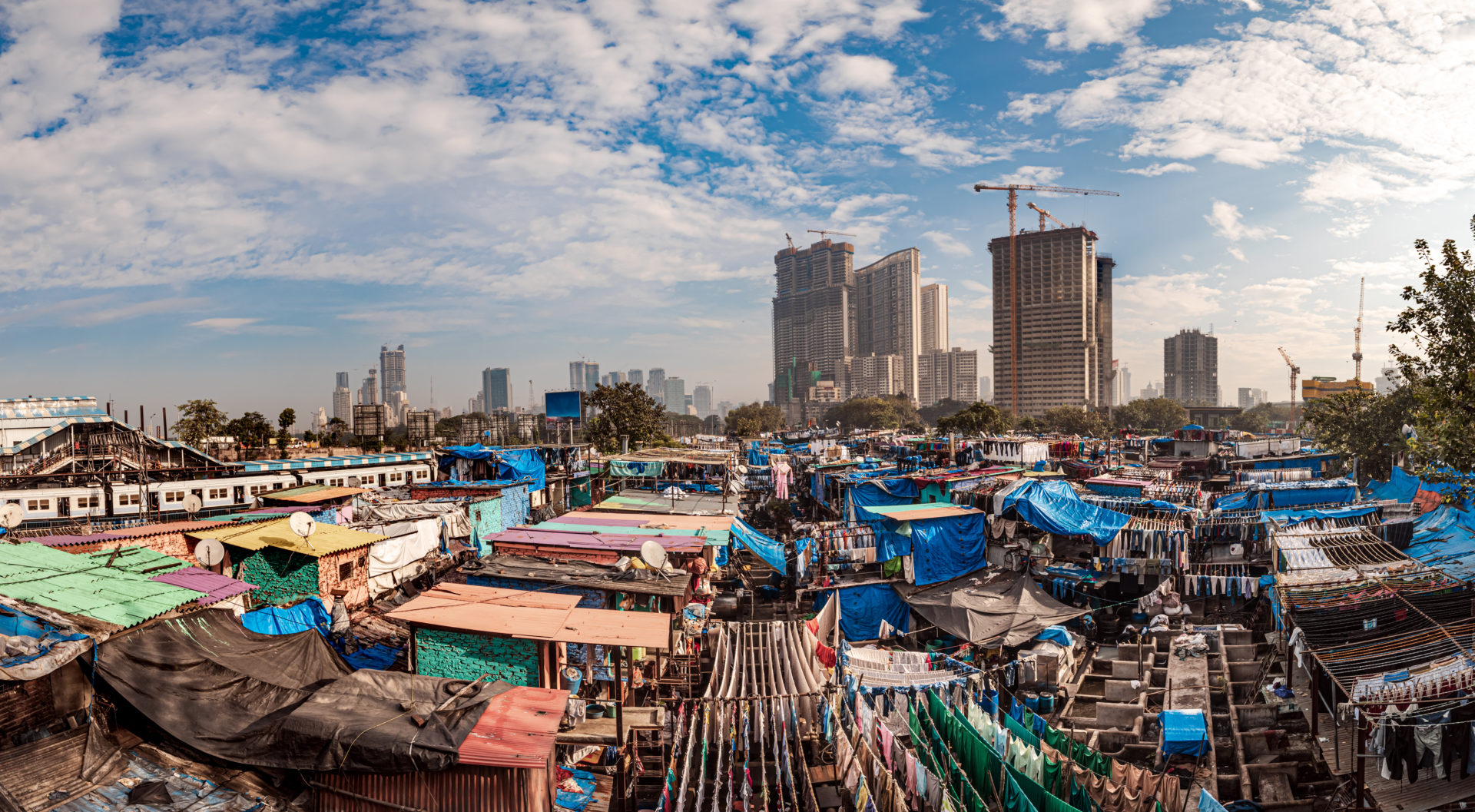
The principal cause of climate change is the production of greenhouse gases from the burning of fossil fuels such as coal, oil, and natural gas. The IPCC has identified that the leading drivers of growth in global emissions are economic and population growth [4]. Greenhouse gas emissions—primarily carbon dioxide (CO2)—dramatically increased in the twentieth century and continue to hit record levels as the global population grows and industrializes [2].
The world’s largest contributors to climate change are the early industrializers: the United States, Russia, Germany, the United
Kingdom, and Japan. Within recent decades, they have been joined by the world’s two most populous countries: China—now the world’s largest carbon emitter—and India [25]. Over the last decade, CO2 emissions have fallen in the United States and many European countries, even while economic growth has continued [26].
Per person, emissions currently are the highest in certain Middle Eastern oil producing countries, such as Qatar and the United Arab Emirates, and in Australia, the United States, and Canada [25]. In contrast, lower income countries, such as Bangladesh, Guatemala, and Uganda, are endeavoring to industrialize their economies amid an already changing climate. Unfortunately, the conventional pathways of economic growth and human development involve processes that intensify climate change and put more people at risk for climate impacts.
The UN’s medium-variant projection (2019) shows the global population reaching 8.5 billion in 2030, 9.7 billion in 2050, and 10.9 billion in 2100 [3]. This projection assumes that fertility falls in countries where large families are still widespread, based on shifts to smaller families that have occurred in other countries as they have developed. Historical data show that lower fertility follows many factors of human development, including reduced child mortality, increased levels of education for girls, urbanization, growing labor force participation, and expanded access to reproductive health care services, including family planning [3].
Close to 6 billion people—about 75% of the world’s population—currently live in middle-income countries that are rapidly industrializing [27]. As their economies continue to grow and integrate with global markets, increases in living standards and consumption will likely drive up the production of greenhouse gases. This means that the very processes of industrialization
that have historically facilitated increases in living standards, overall health, and economic growth for affluent nations now also act as environmental threats for which consequences are more immediate and life-threatening than ever before.
Meanwhile, rapid population growth continues to present challenges for sustainable development in most low-income regions. The combined population of the 47 least developed countries is growing 2.5 times faster than the average for the rest of the world (see Figure 3) [3]. The UN projects that many of these least developed countries will double in population between 2019 and 2050. High fertility is positively correlated with extreme poverty: many of the fastest growing countries are also the poorest, with annual income per person averaging less than $1,000 (see Figure 4) [3, 28]. Both conditions increase vulnerability to stresses associated with climate change.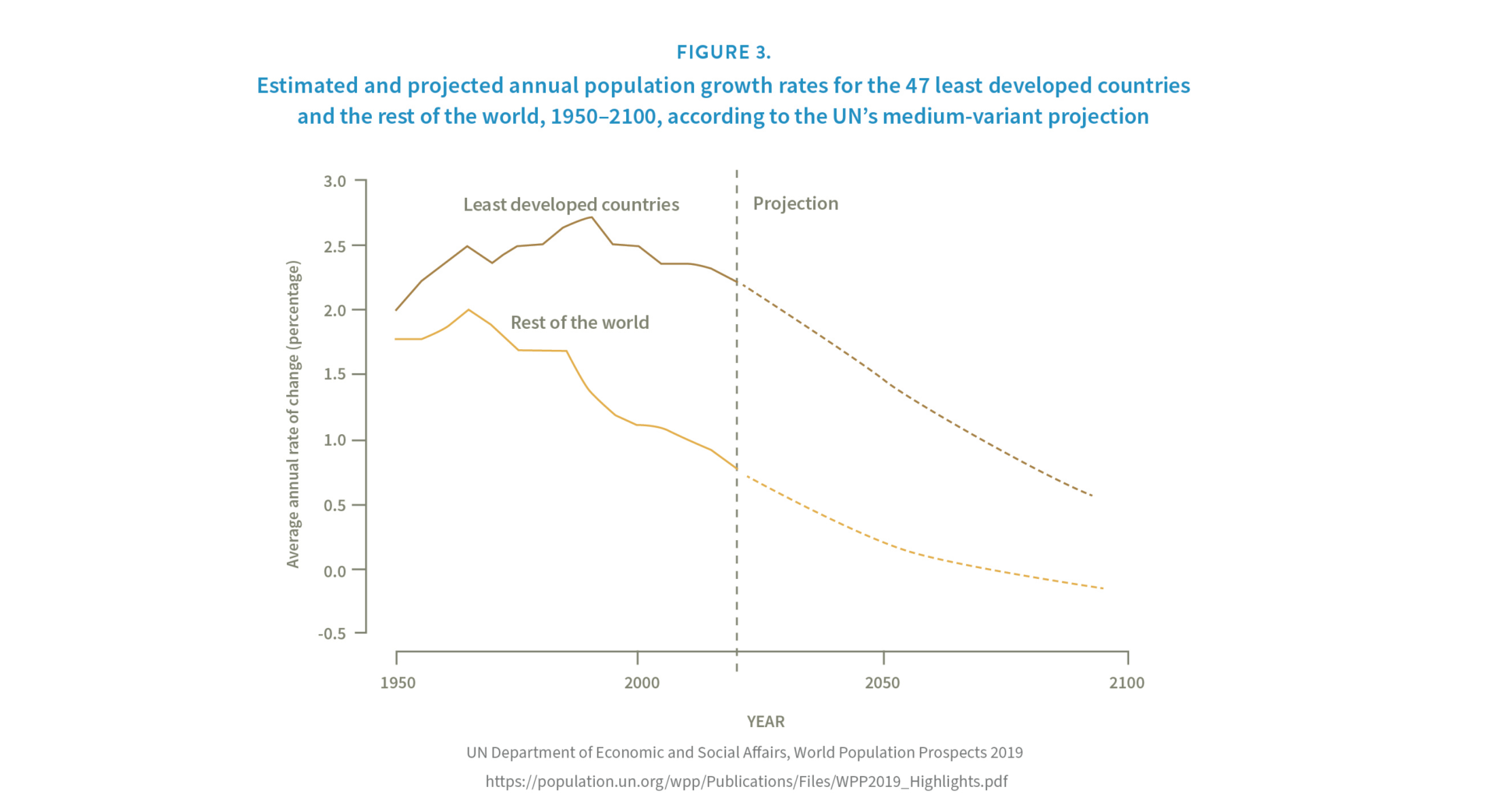
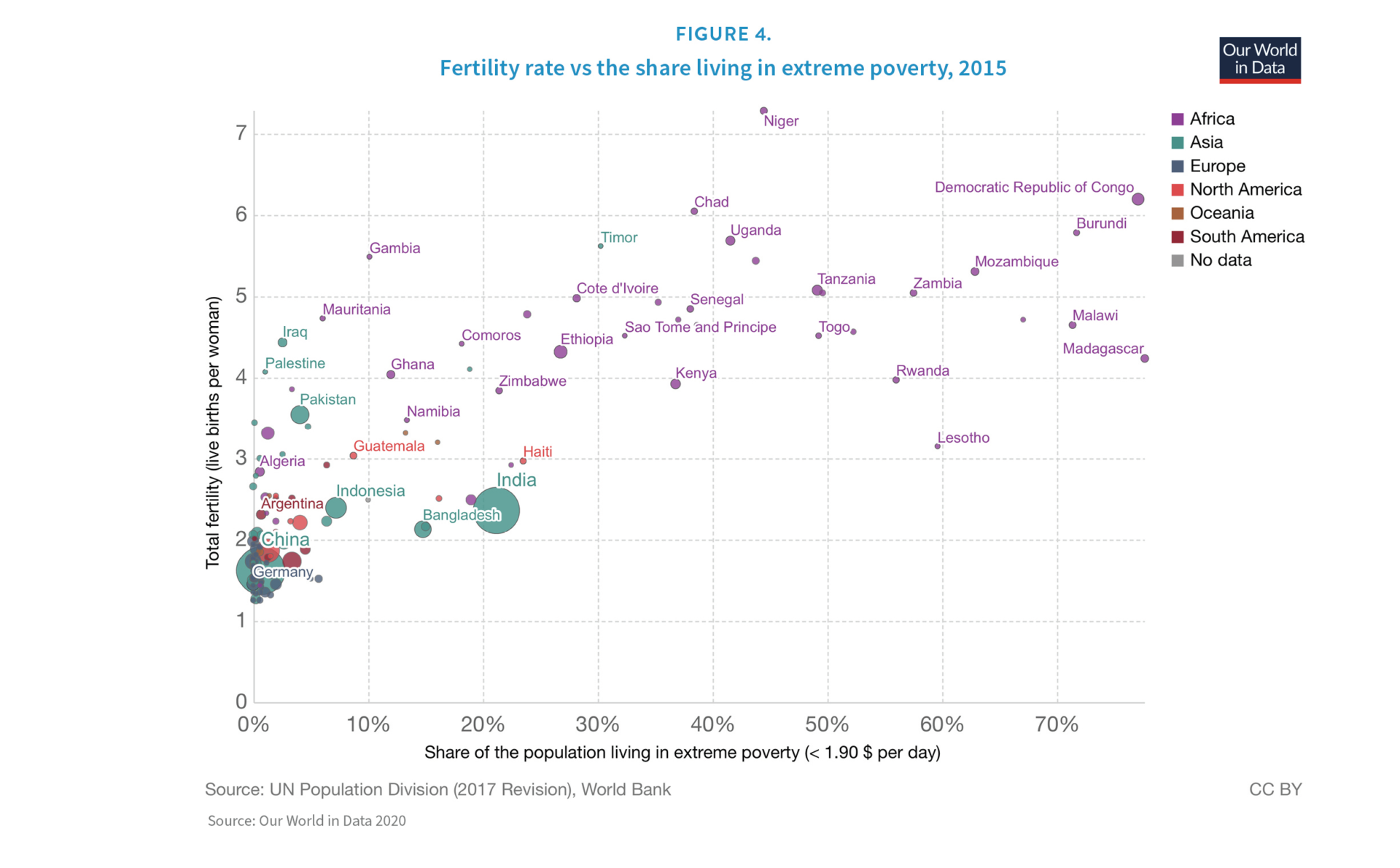
Family Planning and Sustainable Development
To best deal with demographic stresses in climatically vulnerable areas, climate change mitigation and adaptation efforts must recognize the links between poverty reduction, slower population growth, and environmental conservation. The clear association between high fertility rates and poverty signals the potential efficacy of voluntary family planning interventions to address social, economic, and environmental challenges to sustainable development.
Meeting the global unmet need for family planning is a prime example of an integrated solution, as it holds substantial implications for reducing global emissions and mitigating climate impacts while fostering global human rights and sustainable development efforts. The social, economic, and environmental benefits associated with providing women the tools and information to control their fertility include environmental conservation, improved food security, decreased poverty, and heightened community resilience [35].
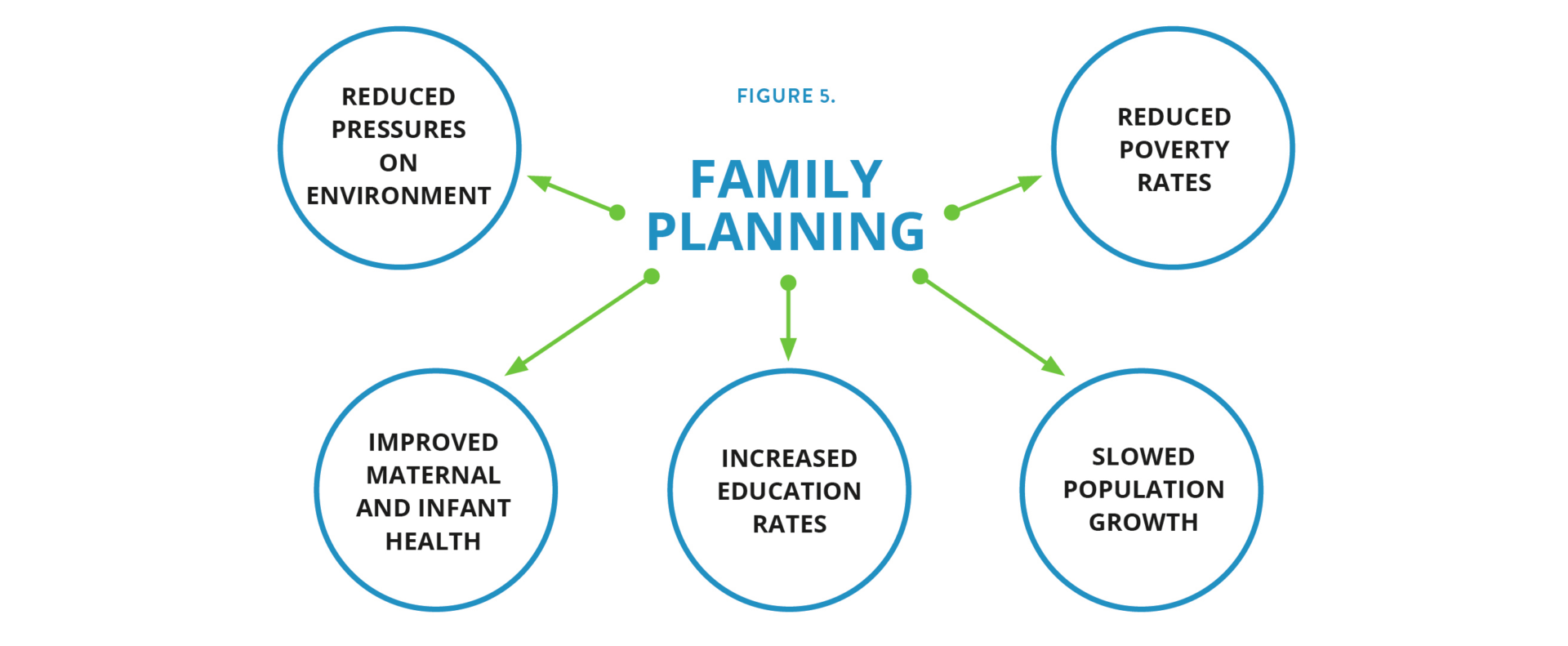
Because family planning enables women to autonomously manage whether and when they become pregnant, one significant outcome of providing access to contraceptives is increased education rates for women and girls [36, 37]. And because higher levels of education afford more options for sustained employment and improved livelihoods, women with higher levels of education tend to have fewer and healthier children. For example, a World Bank analysis on the relationship between fertility rates and education in Ethiopia concludes that girls receiving 12 years of education have four fewer children than their unschooled peers [38].
Reducing population growth is also better for the environment. It eases pressures relative to resource distribution and allocation and can lessen local and regional environmental degradation.
Over time, slower population growth also reduces greenhouse gas emissions—so much so that by the end of the century, the effects of slower population growth could reduce total emissions from fossil fuels by as much as 41% compared to faster growth scenarios [39].
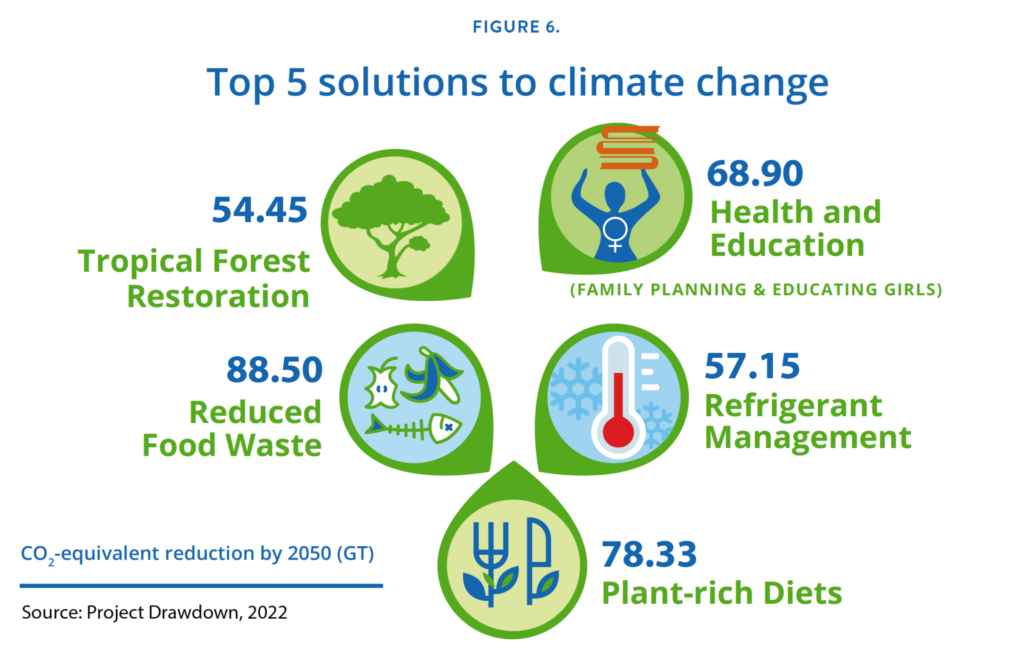 The positive and cross-sectoral impacts of family planning are vital for meeting the UN Sustainable Development Goals (SDGs) for 2030, particularly health (SDG 3), education (SDG 4), gender (SDG 5), and climate action (SDG 13) [1]. Slowing population growth through voluntary family planning services is increasingly being identified as a human rights-based and cost-effective component of climate change mitigation and adaptation strategies. Recent research shows that family planning, together with girls’ education, could prevent emissions of 69 gigatons of CO2 equivalent by 2050—potentially comparable to large-scale development of wind power (see Figure 6) [40]. The emissions averted through investments in family planning are also much cheaper (about $4.50 per ton of CO2) in comparison to other options such as solar power ($28 per ton) or carbon capture and storage from new coal plants ($95 per ton) [24, 41].
The positive and cross-sectoral impacts of family planning are vital for meeting the UN Sustainable Development Goals (SDGs) for 2030, particularly health (SDG 3), education (SDG 4), gender (SDG 5), and climate action (SDG 13) [1]. Slowing population growth through voluntary family planning services is increasingly being identified as a human rights-based and cost-effective component of climate change mitigation and adaptation strategies. Recent research shows that family planning, together with girls’ education, could prevent emissions of 69 gigatons of CO2 equivalent by 2050—potentially comparable to large-scale development of wind power (see Figure 6) [40]. The emissions averted through investments in family planning are also much cheaper (about $4.50 per ton of CO2) in comparison to other options such as solar power ($28 per ton) or carbon capture and storage from new coal plants ($95 per ton) [24, 41].
Reproductive Health and Family Planning Bolster Resilience to Climate Change
Including family planning and quality reproductive health care in community development strategies enhances resilience to climate change. Building resilience involves anticipating changes and developing capacity to allow social and ecological systems to “more readily recover from environmental change and shocks, avoid recurring crises, and develop sustainably” [42]. Ways that communities can bolster resilience to climate change include managing ecosystems, adopting adaptive governance practices, and developing natural disaster mitigation and response strategies [42]. Such approaches that recognize the connections among population dynamics, overall health, and environmental conservation are known as Population, Health, and Environment (PHE) approaches. Development efforts focused in areas such as food and water security and natural resource management could be improved by incorporating family planning and reproductive health care—a holistic PHE approach that ultimately enhances climate resilience.
Family planning works to strengthen people’s ability to adapt to environmental changes and climate impacts. Family planning improves the health of mothers and their children, which in turn augments climate resilience at the individual and population levels. This is because good health is an important indicator of one’s ability to endure major environmental disturbances in both physical and psychological terms [42]. Additionally, family planning helps facilitate women’s empowerment and personal autonomy, which increases the likelihood of participation and engagement in climate adaptation efforts [43].
Family planning improves the health of mothers and their children, which in turn augments climate resilience at the individual and population levels.
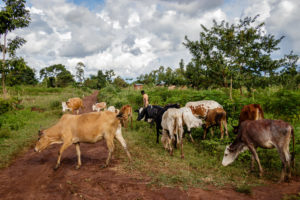
Furthermore, the ability to avoid unintended pregnancies leads to smaller families. This reduces demand for food and water, thereby reducing pressures on local natural resources. It also reduces the number of people at risk from climate impacts [43]. Recovery efforts are more manageable with fewer people needing assistance. As an expert working group convened by the Population Reference Bureau and Worldwatch Institute summarizes, the“benefits of family planning—improved health, education, income, and wealth—all are recognized
as important building blocks for resilience and adaptive capacity” [44].
Filling the Family Planning Gap
Currently, there are 218 million women in low- and middle- income countries who want to avoid pregnancy but are not using modern forms of contraception [37]. Research by the Guttmacher Institute shows that in these regions alone, women have about 111 million unintended pregnancies annually—almost half of all pregnancies in those countries. Meeting needs for contraception and quality reproductive health care services could prevent close to two-thirds of unintended pregnancies, unsafe abortions, and maternal deaths (see Figure 6) [37].
The annual cost of addressing the unmet need for family planning in low- and middle-income countries is about $12.6 billion per year [37]. Family planning and reproductive health advocates recommend that the United States contribute to that sum in proportion to its development aid through the Development Assistance Committee of the Organization for Economic Cooperation and Development (OECD) [45]. That would make for an annual U.S. contribution of $1.6 billion.
Funding family planning yields an impressive return on investment: Every dollar invested in providing sexual and reproductive health services and meeting the unmet need for contraception yields $120 worth of other benefits [46]. Among such benefits are reduced poverty, increased overall health of populations, increased economic opportunity, increased gender equality, and a more educated population of girls and women.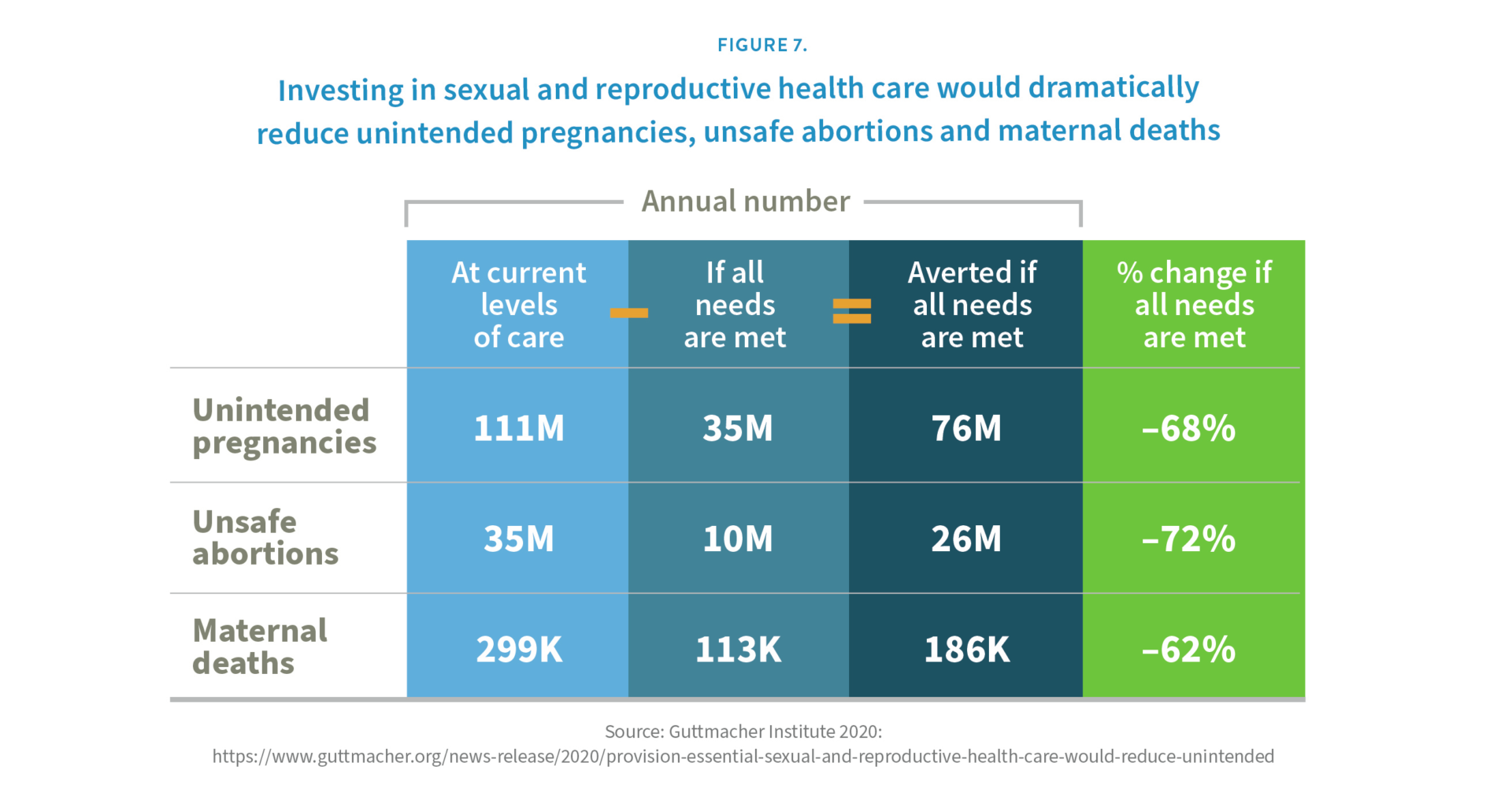
Expanding access to reproductive health care and family planning information and services helps women realize their right to control whether, when, and with whom they become pregnant. Meeting existing needs for reproductive health care would decrease poverty and improve health while slowing population growth—and therefore the growth of greenhouse gas emissions. Together these gains improve the resilience capacity of individuals, communities, and countries to adapt to a changing climate. Funding for reproductive health care, especially in low-income regions, is crucial both within the context of human rights and climate change mitigation and adaptation. Efforts to expand access to family planning and gender equity represent integrated solutions for sustainable development that should be included in broader strategies for low-carbon and climate-resilient development.
ENDNOTES
- United Nations. SDGs: Sustainable Development Knowledge Platform. 2020; Available from: https://sustainabledevelopment.un.org/sdgs
- IPCC, Summary for Policymakers. In: Global Warming of 1.5°C. An IPCC Special Report on the impacts of global warming of 1.5°C above pre-industrial levels and related global greenhouse gas emission pathways, in the context of strengthening the global response to the threat of climate change, sustainable development, and efforts to eradicate poverty, V. Masson-Delmotte, P. Zhai, H.-O. Pörtner, D. Roberts, J. Skea, P.R. Shukla, A. Pirani, W. Moufouma-Okia, C. Péan, R. Pidcock, S. Connors, J.B.R. Matthews, Y. Chen, X. Zhou, M.I. Gomis, E. Lonnoy, T. Maycock, M. Tignor, and T. Waterfield, Editor. 2018: www.ipcc.ch/sr15/chapter/spm.
- United Nations. World population prospects 2019: Highlights. 2019; Available from: https://population.un.org/wpp/Publications/Files/WPP2019_Highlights.pdf.
- IPCC, Climate change 2014: Synthesis report. Contribution of Working Groups I, II and III to the Fifth Assessment Report of the
Intergovernmental Panel on Climate Change. 2015, Geneva: Intergovernmental Panel on Climate Change. - Thornton, P.K., et al., Mapping climate vulnerability and poverty in Africa. Report to the Department for International Development. 2006, The International Livestock Research Institute (ILRI) in collaboration with The Energy & Resources Institute (TERI) and The African Centre for Technology Studies (ACTS): Nairobi.
- U.S. Census Bureau, U.S. and world population clock. 2020.
- United Nations. World population prospects 2019. 2019; Available from: https://population.un.org/wpp.
- Mondal, M. and H. Sanaul, The implications of population growth and climate change on sustainable development in Bangladesh. Jàmbá: Journal of Disaster Risk Studies, 2019. 11(1): p. 1-10.
- Environmental Justice Foundation, On the frontlines: Climate change in Bangladesh. 2018: London.
- Cornwall, W., As sea levels rise, Bangladeshi islanders must decide between keeping the water out—or letting it in. Science, 2018.
- Glennon, R., The unfolding tragedy of climate change in Bangladesh. Scientific American, 2017. 12.
- Chen, J. and V. Mueller, Coastal climate change, soil salinity and human migration in Bangladesh. Nature Climate Change, 2018. 8(11): p. 981-985.
- Hauer, M.E., et al., Sea-level rise and human migration. Nature Reviews Earth & Environment, 2019: p. 1-12.
- Huda, F.A., et al., Contraceptive practices among married women of reproductive age in Bangladesh: a review of the evidence.
Reproductive Health, 2017. 14(1): p. 69. - National Institute of Population Research and Training (NIPORT), Mitra and Associates, and ICF International, Bangladesh
Demographic and Health Survey 2011. 2013: Dhaka and Calverton, Maryland. - Family Planning 2020. Bangladesh: Commitment maker since 2012. 2020; Available from: http://www.familyplanning2020.org/
bangladesh. - Rigaud, K.K., et al., Groundswell: Preparing for internal climate migration. 2018, World Bank: Washington, DC.
- IPCC, Summary for policymakers, in Climate Change 2014: Impacts, Adaptation, and Vulnerability. Part A: Global and Sectoral Aspects. Contribution of Working Group II to the Fifth Assessment Report of the Intergovernmental Panel on Climate Change. 2014, Cambridge University Press: Cambridge, U.K., and New York.
- Daigle, K. and M. Singh, As waters rise, coastal megacities like Mumbai face catastrophe. Science News, 2018(August 18, 2020).
- McGranahan, G., D. Balk, and B. Anderson, The rising tide: assessing the risks of climate change and human settlements in low elevation coastal zones. Environment and urbanization, 2007. 19(1): p. 17-37.
- Chapman, A. and S. Darby, Evaluating sustainable adaptation strategies for vulnerable mega-deltas using system dynamics modelling: Rice agriculture in the Mekong Delta’s An Giang Province, Vietnam. Science of the Total Environment, 2016. 559: p. 326-338.
- Conniff, R., The vanishing Nile: A great river faces a multitude of threats. Yale Environment 360, 2017.
- Sefelnasr, A. and M. Sherif, Impacts of seawater rise on seawater intrusion in the Nile Delta aquifer, Egypt. Groundwater, 2014. 52(2): p. 264-276.
- Wheeler, D. and D. Hammer, The economics of population policy for carbon emissions reduction in developing countries. Center for Global Development Working Paper, 2010(229).
- Ritchie, H. and M. Roser. CO₂ and greenhouse gas emissions. Our World in Data 2019; Available from: https://ourworldindata.org/co2-and-other-greenhouse-gas-emissions.
- Le Quéré, C., et al., Drivers of declining CO2 emissions in 18 developed economies. Nature Climate Change, 2019. 9(3): p. 213-217.
- World Bank. The World Bank in Middle Income Countries. 2019; Available from: https://www.worldbank.org/en/country/mic.
- Our World in Data. Fertility rate vs the share living in extreme poverty, Data from the United Nations and World Bank. 2017; Available from: https://ourworldindata.org/grapher/fertility-rate-vs-the-share-living-in-extreme-poverty.
- World Bank. World development indicators. 2020; Available from: http://datatopics.worldbank.org/world-development-indicators.
- Walker, R.A., et al., Uganda Economic Update – 14th Edition: Strengthening Social Protection to Reduce Vulnerability and Promote Inclusive Growth. 2020, World Bank: Washington, DC.
- FAO, National gender profile of agriculture and rural livelihoods: Uganda, in Country Gender Assessment Series. 2018, U.N. Food and Agriculture Organization: Kampala.
- USAID. Uganda Climate Vulnerability Profile. 2012; Available from: https://www.climatelinks.org/sites/default/files/asset/
document/uganda_climate_vulnerability_profile_jan2013.pdf. - Ministry of Foreign Affairs of the Netherlands, Climate change profile: Uganda. 2018: The Hague.
- Notre Dame Global Adaptation Initiative. ND-GAIN country index. 2020; Available from: https://gain.nd.edu/our-work/
country-index. - International Planned Parenthood Federation (IPPF) and Population and Sustainability Network, Climate change: Time to “think family planning”. 2016.
- Canning, D. and T.P. Schultz, The economic consequences of reproductive health and family planning. The Lancet, 2012. 380(9837): p. 165-171.
- Sully, E., et al., Adding it up: Investing in sexual and reproductive health, 2019. 2020, Guttmacher Institute: New York.
- Canning, D., S. Raja, and A.S. Yazbeck, Africa’s demographic transition: dividend or disaster? 2015: The World Bank.
- O’Neill, B.C., et al., Global demographic trends and future carbon emissions. Proceedings of the National Academy of Sciences,2010. 107(41): p. 17521-17526.
- Project Drawdown, Drawdown Climate Solutions Library, June 2022; Available from: https://drawdown.org/solutions
- Gillingham, K. and J.H. Stock, The cost of reducing greenhouse gas emissions. Journal of Economic Perspectives, 2018. 32(4):
p. 53-72. - Hardee, K., et al., Family planning and resilience: Associations found in a Population, Health, and Environment (PHE) project in Western Tanzania. Population and Environment, 2018. 40(2): p. 204-238.
- Mogelgaard, K. and K.P. Patterson, Building resilience through family planning and adaptation finance, in Population Reference
Bureau Policy Brief. 2018, Population Reference Bureau: Washington, DC. - Population Dynamics and Climate Change Working Group, Making the connection: Population dynamics and climate compatible development recommendations from an expert working group. 2014, Population Reference Bureau and Worldwatch Institute:
Washington, DC. - Population Action International, Just the math: Methodology for calculating the U.S. share of the cost of addressing the unmet need for contraception in developing countries, in Washington Memo. 2018.
- Deliver for Good, The investment case for girls and women, R. Horton, Editor. 2017, The Lancet and Women Deliver: New York.

